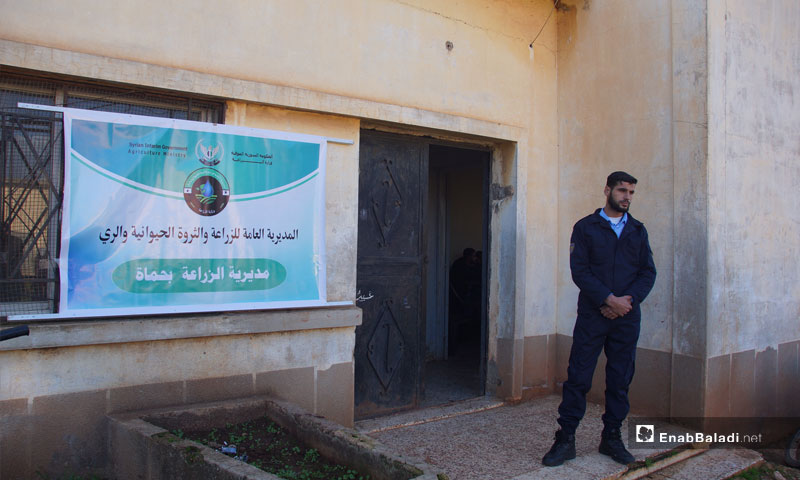In al-Ghab Plain, rural Hama, the farmers are anticipating the launch of the General Directorate of Agriculture and Livestock, full of hope that it will revive the agricultural sector, which for years has been handicapped.
The General Directorate of Agriculture, Livestock and Irrigation was opened on December 24 in the village of al-Amqiyah, in the presence of representatives of the Ministry of Agriculture of the Syrian Interim Government.
According to the agricultural investment map in Hama governorate, al-Ghab Plain covers a space of 50 thousand hectares, and it stands out due to its agricultural importance, making it the largest agricultural production area in Syria.
Al-Ghab Plain is controlled by the factions of the “Free Army,” except for a small part that is held by the Syrian regime.
Engineer Khalid al-Ahamad, director of the General Directorate of Agriculture, Livestock and Irrigation, told Enab Baladi about the structure of the new directorate, which includes the directors of the administrative departments, guidance, prevention, statistics, planning and studies, censorship, agricultural economy, forestry and livestock.
Action has been divided between four departments according to the areas they cover, Qalaat al-Madiq, Kafr Nabudah, al-Ziyarah and Kafr Zita, under which additional agricultural extensions, irrigation centers and the veterinary centers of the Livestock Department also function.
Engineer Ahmad attributed the delay of the establishment of the directorate to lacking needed conditions in former years, enhanced by the displacement waves and the reigning security status. However, today, the foundation of the Directorate became a necessity since the area is agricultural par excellence.
The Directorate’s Various Objectives
The Head of the Agriculture Directorate said that it aims to develop agricultural production in the presence of an entity concerned with setting up the plan of agricultural regulation and coming up with agricultural plans for the development of the area and betterment of production at both levels of quantity and quality, through the attraction of competent staffs of veterinarians and farmers as to organize the area in the two fields of plant and animal production, according to al-Ahmad.
The Directorate will also work to retrieve trust between the farmers and the agriculture departments to bridge the gap created during the revolution, in addition to regulating agricultural work and helping farmers meet the basic needs of their profession, including fertilizers and seeds.
The Directorate seeks to provide vaccines necessary for livestock, in coordination with the empowered actors in Syria; local councils and administrations, Anas Abu Tarboush, Managerial Director, told Enab Baladi.
Zakaraya Ibrahim, a former from al-Ghab Plain, said that farmers faced various difficulties at securing seeds and also selling them, as well as the high prices of fertilizers and pesticides, in addition to fuel high prices, the rise of which caused an increase of the costs of tilling the soil.
Ibrahim is hopeful that the new Directorate will supply them with seeds and will be able to choose types suitable for the area; it will also help in creating a plan for the season’s agricultural cycle and a market for the products, while preventing the merchants from exploiting the farmers.
A Promising Season
About the area’s agricultural reality, Anas Abu Tarboush, Managerial Director, said that northern and western rural Hama are famous for crops, different from those cultivated in other areas, in terms of quality and timing, for the two areas of Kafr Nabudah and Kafr Zita and their rural parts are known for potato, wheat and aromatic crops.
The area of al-Ghab plain is considered strategic when it comes to wheat cultivation.
The Directorate estimated the area to be cultivated in the 2019 season in rural Hama with 18 thousand dunams of rain-fed hard wheat, 54 thousand dunams of irrigated soft wheat and 78 thousand dunams of irrigated hard wheat.
The area to be cultivated with summer and spring corps in 2019 is 15 thousand dunams of spring potato, 20 thousand dunams of corn, beans, tomatoes and cucumbers ten thousand dumas each type, in addition to 70 thousand dumas of pepper, and 70 thousand dumas of eggplant.
As for livestock it will concentrate on raising sheep, goats and cows and a limited range of poultry taking into consideration the conditions governing the area and the recurrent displacement movements, according to Abu Tarboush.

